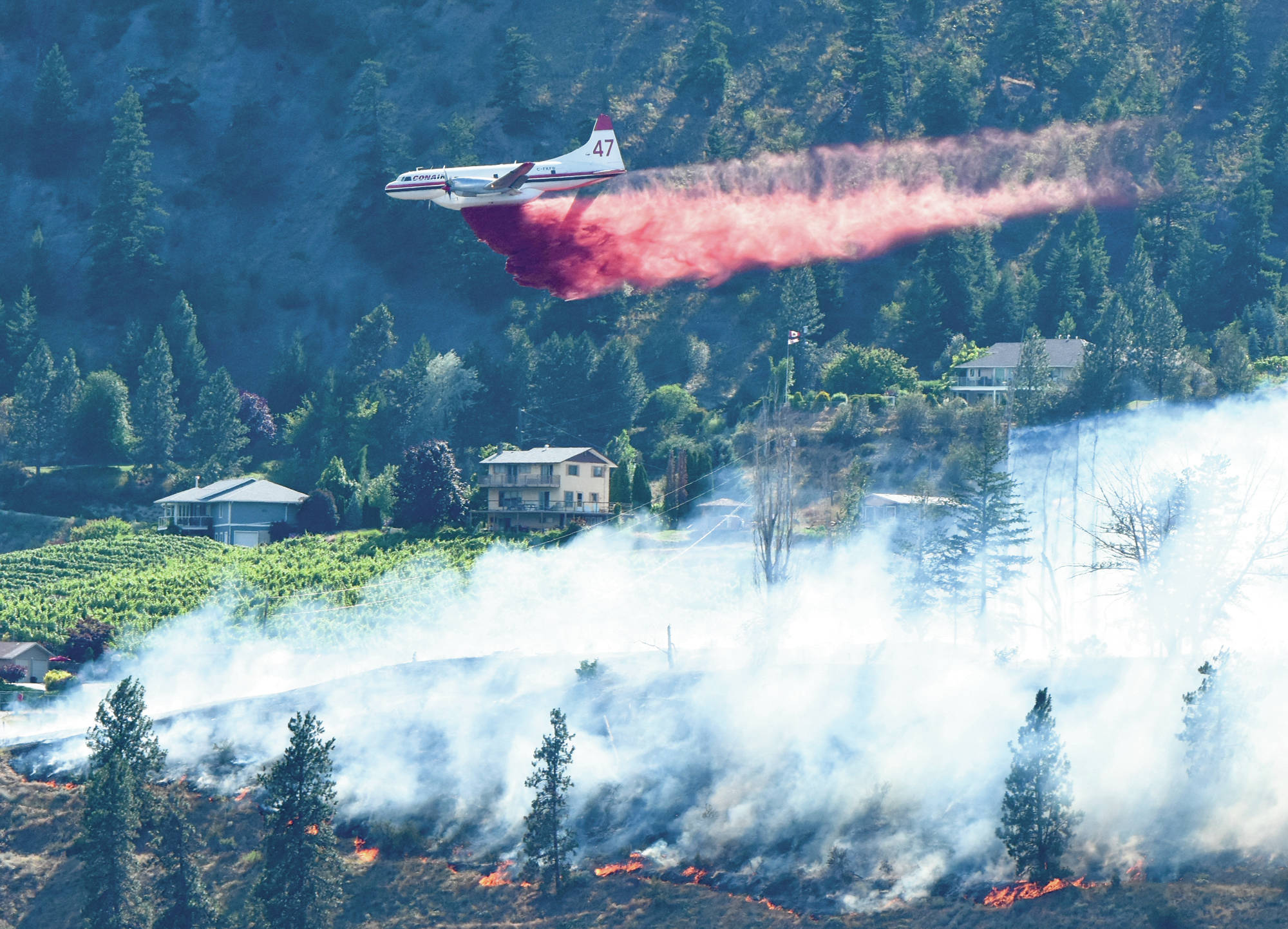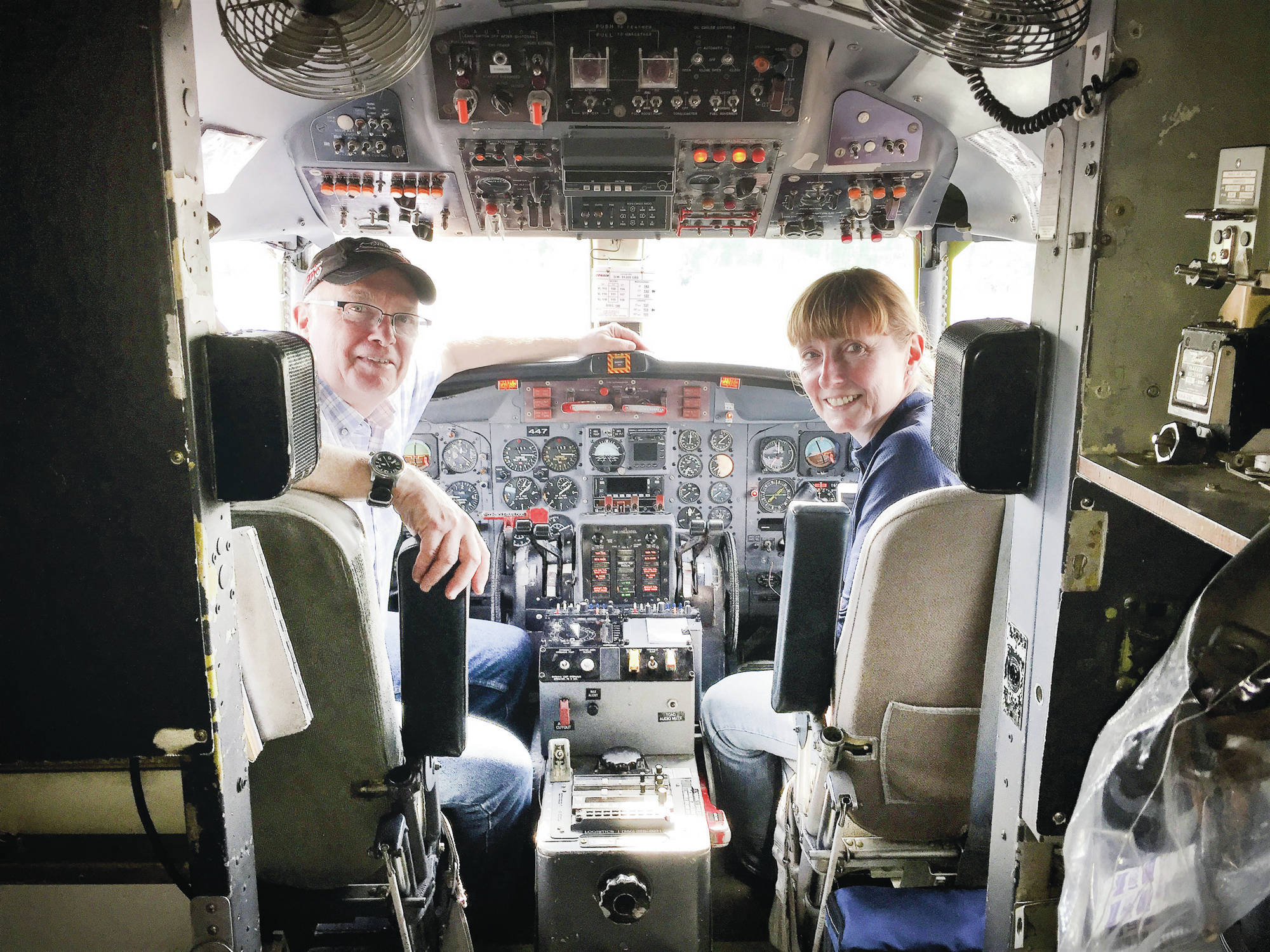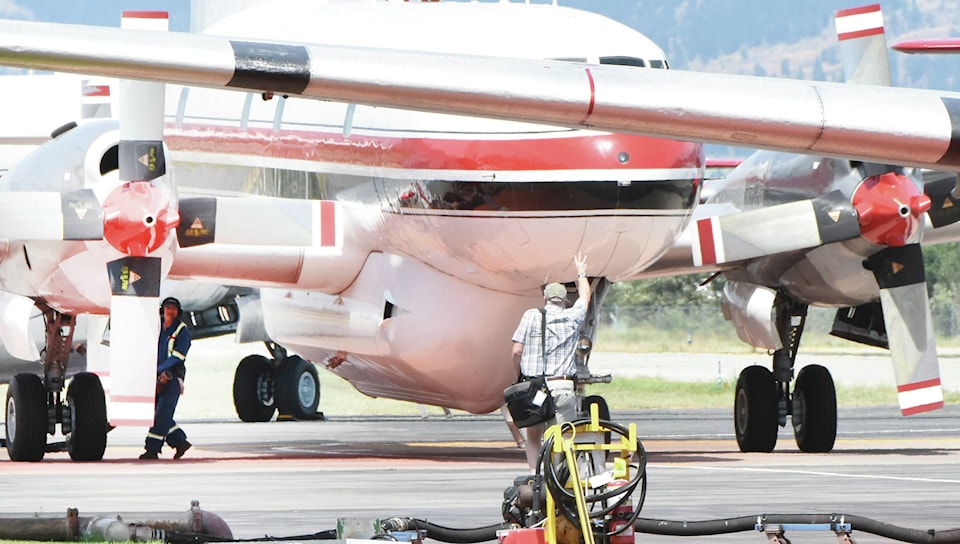With the volatile and tinder-dry conditions in the province’s fire-ravaged forests, there’s an underlying sense of urgency this day at the Penticton Airtanker Base tucked away in the airport’s northwest corner.
Sitting at the kitchen table eating lunch, which he calls “refuelling,” is Conair Aerial Firefighting pilot and 447 Captain, Grahame Wilson, a veteran of 34 seasons of aerial firefighting in North America and Europe.
“So we just landed an hour ago - today was an exception, we were called out at 7:30 in the morning,” said Wilson, whose home in the off season is in Victoria where he lives with his wife and their pet dog. “The first thing we do when we get back is fuel up the airplane, the pilots do that themselves to make sure it is ready for it’s next mission which could come at any time. We’re on red (alert) now which is immediate response.
“The second thing is we take care of ourselves. I hadn’t eaten since breakfast so I made sure I was ready for the next three or four hours or however long I am going to be needed for.”
Flying the Convair #47 air tanker, Wilson was on duty not far from his home-away-from-home just 10 days ago fighting the wildfire which was threatening the community of Kaleden.
“You have to be very disciplined,” said Wilson who was dousing fires in Alaska earlier this year. “You have to keep your emotions in check but I would tell you that all of us are very on edge when it is an interface fire, peoples’ property, their lives in danger, for you that’s the highest order of concern.”
According to many who fought the fire on the ground and from the air, the potential for disaster, was as one pilot put it, “horrific.”
While one home was destroyed, many others were saved due in part to the work of the air crews. A thank-you card from one of the grateful Kaleden residents is still pinned to the bulletin board at the base.
“It’s a really good feeling to know that you helped somebody and that it wasn’t just a swamp burning up north somewhere,” said Wilson. “I never get tired of that feeling.”
The aerial firefighting service is contracted out to Abbotsford-based Conair Group by the BC Wildfire Service. The Canadian company is one of the world’s most experienced aerial firefighting operations, employing over 300 people in this country as well as the U.S., France and Australia.
“People ask me: ‘Is it a dangerous job?’ My answer to that is that it has an element of risk but my responsibility is to make it as safe as I can,” said Wilson.
The workhorse Convair tankers he and the other pilots fly were built in the ’50’s and Wilson admits there is an emotional attachment to the plane he flies.
“I fly all summer and because she and I share those experiences, we take care of each other and she brings me home at night,” he said, adding with a smile: “That’s my emotional self talking but I’m also driving a 20-year-old Volvo that’s been in the family since new.”
Flying with the veteran pilot on most missions these days is Shawna Kirby who is working her first fire season with Conair.
While new to the company, Kirby is not unused to challenging and dangerous flying conditions having flown in war zones in Sudan and Somalia as well as in Russia.
When asked how she prepared for flights where people were shooting at her, she replied: “You don’t. You stay low and run.”
Kirby initially planned to take paragliding lessons however her parents told her if she was going to learn to fly it would have to be something with an engine.
And laughing, about her reason for a career in aviation she said: “I failed typing.”
For his part Wilson enjoys having newcomers in the first officer’s seat to his right.
“I find it very interesting and rewarding working with a new pilot,” he said. “Everything is new to her and that makes me feel that this is new to me too,” he said.
He described crews at the base being very tight knit family.
“You do get very close to your work mates,” said Wilson. “It’s a situation where you watch each other’s backs and you don’t leave anything unsaid. We depend on each other.”
That camaraderie is also important during the slow times.
With a 130-day contract at 10 hours a day over the four months there is only around 200 hours of flying time.
“On a busy day when it has been intense your drained and tired but the flip side is there are some days where you don’t go anywhere and still feel tired,” he said.
In the off season Wilson described himself as a “professional bum.”
“Some pilots do a lot of other interesting things but in the winter I make sure the house is clean and make dinner for my wife,” he said. “But it is nice to get home and see the family again and be with your own life instead of the summer life. Walk the dog, we have a dog and I miss him but in the meantime we’re here and available everyday.”
Just then, and not unexpectedly, the alarm tones sound simultaneously on the half dozen cell phones of the crew members inside the base house as well as on the outdoor loud speakers.
“Here we go,” said Wilson as personnel begin to move to their stations.
With the alert there is almost a sense of relief as the crews do what they do best and begin to get two of the three large tankers airborne.
The four pilots collect their paperwork and head out on the apron to board the aircraft, Wilson wearing his summer shirt, shorts and baseball cap.
Shortly afterwards, one by one, the large props slowly begin to turn as the sound of the engines build.
Within 10 minutes the planes are on their way to another fire, a scenario which is likely to be repeated many times this summer.





